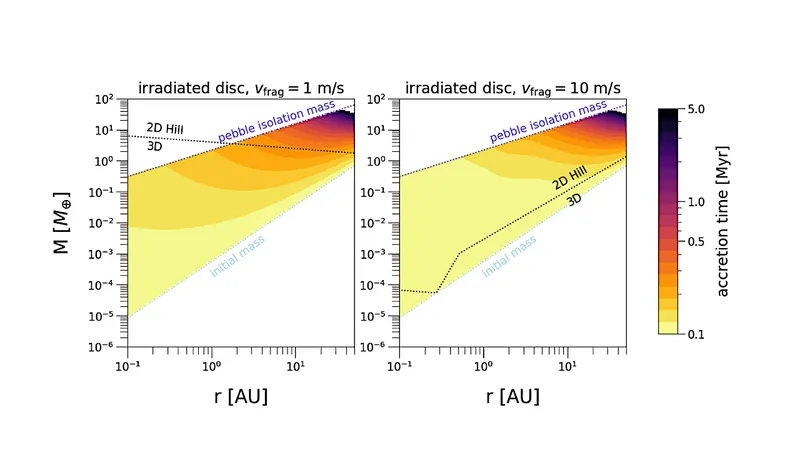
Unlocking the Secrets of Earth-like Planets: Why Cold Giants Matter
2025-06-29
Author: Jacob
Super-Earths vs. Terrestrial Planets: What’s the Difference?
In the vast expanse around our Sun, terrestrial planets like Earth have reached their mass limits, while super-Earths continue to pop up around almost every sun-like star. But what exactly sets these two categories apart?
The Tantalizing Role of Gas Giants
Researchers have been perplexed by a fundamental question: how do gas giants, especially those on wide orbits, influence the formation of planets like Earth? New findings suggest that the secret lies in the amount of viscous heating occurring in the inner disc of a solar system—this heating is crucial for pebble accretion, which fosters planet growth.
Pebble Accretion: A Game Changer in Planet Formation
In a groundbreaking parameter study, scientists explored the dynamics of pebbles—tiny building blocks for planetary bodies. They found that the size and behavior of these pebbles, affected by factors like fragmentation and radial drift, play a pivotal role. When viscous heating is maximally efficient, it surprisingly hampers pebble accretion in the regions where terrestrial planets form.
Unveiling the Water Iceline: Minor but Mighty?
Interestingly, the presence of the water iceline—a crucial divider for phases of water—appears to be less significant than previously thought, unless paired with drastic volatile losses or changes in pebble fragmentation velocity.
Gas Giants and Pebble Filtering: A Hidden Connection?
The research also shed light on how gas giants can impact the inner formation of planets through mutual pebble filtering. Yet, this influence is minimal without other factors that delay accretion processes, such as viscous heating or the positioning of an iceline.
The Bigger Picture: Understanding Diverse Inner-Disc Systems
This intriguing conclusion aligns well with the observed phenomena: despite the presence of known gas giants in wider orbits, super-Earths continue to thrive without significant suppression. The complexities of disc accretion physics, particularly inside the water iceline, are becoming clearer, yet many questions remain unanswered.
As this field of research evolves, the intricate dance between planetary formation and the role of gas giants reveals a universe teeming with potential for new discoveries.









 Brasil (PT)
Brasil (PT)
 Canada (EN)
Canada (EN)
 Chile (ES)
Chile (ES)
 Česko (CS)
Česko (CS)
 대한민국 (KO)
대한민국 (KO)
 España (ES)
España (ES)
 France (FR)
France (FR)
 Hong Kong (EN)
Hong Kong (EN)
 Italia (IT)
Italia (IT)
 日本 (JA)
日本 (JA)
 Magyarország (HU)
Magyarország (HU)
 Norge (NO)
Norge (NO)
 Polska (PL)
Polska (PL)
 Schweiz (DE)
Schweiz (DE)
 Singapore (EN)
Singapore (EN)
 Sverige (SV)
Sverige (SV)
 Suomi (FI)
Suomi (FI)
 Türkiye (TR)
Türkiye (TR)
 الإمارات العربية المتحدة (AR)
الإمارات العربية المتحدة (AR)